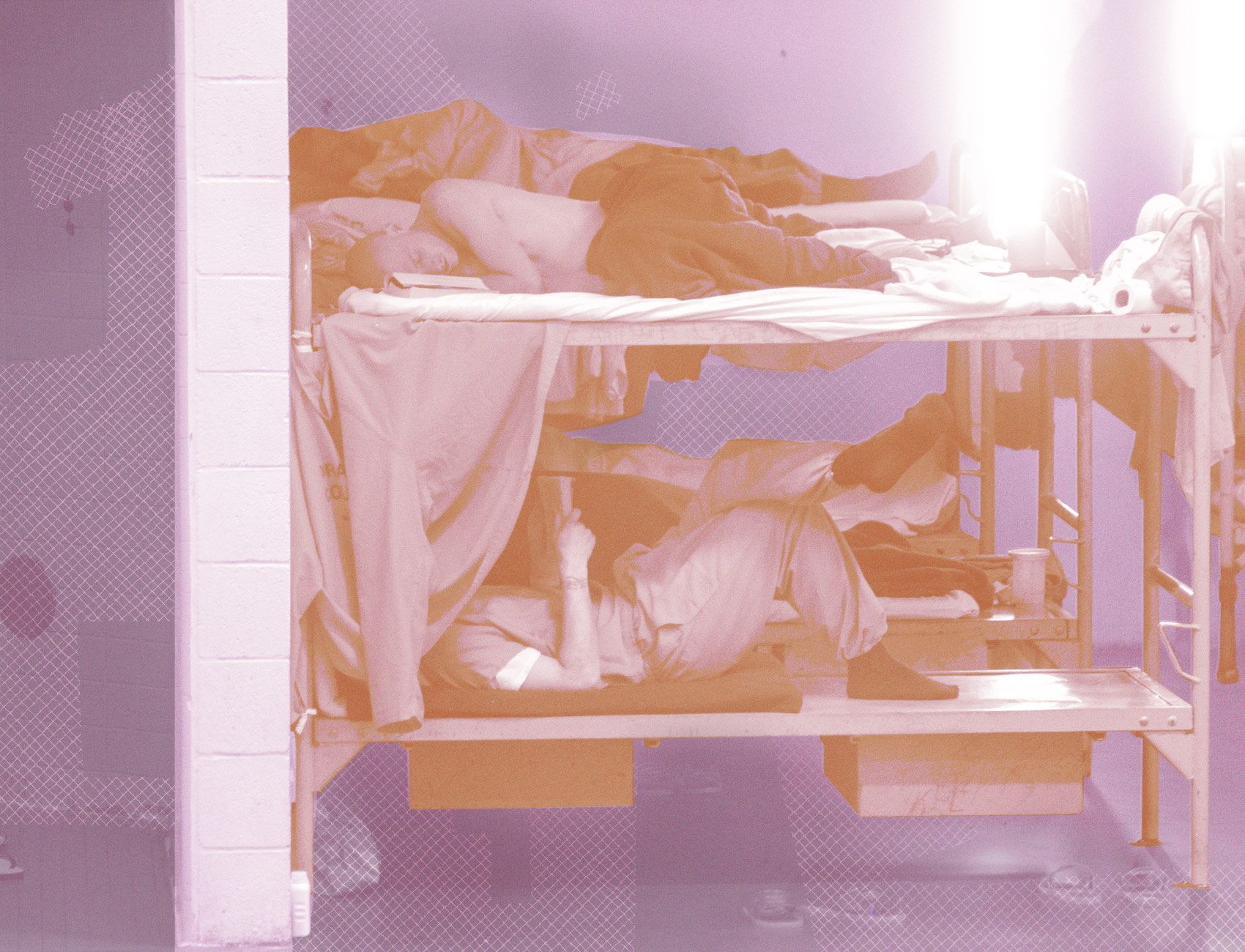Bureau of Prisons Is ‘Shifting Deck Chairs on the Titanic’ With Quarantine Plan, Critics Say
Criminal justice reform advocates question why the BOP plans to move people around rather than reduce prison populations.

Kevin Seifert, a new father who has an autoimmune disorder, knows he’s at risk when he goes to work as a correctional officer at a federal prison in Hazelton, West Virginia. He tries to do what he can to protect himself: He wears personal protective equipment at work and removes his jacket and boots in his garage when he gets home.
So far, the facility hasn’t reported any cases of the virus. But that could soon change.
FCI Hazelton is one of 11 federal prisons across the country that the Bureau of Prisons has designated quarantine facilities. When new people are convicted or otherwise brought into the federal system, they will be sent to one of the facilities for a two-week quarantine period, BOP spokesperson Justin Long told The Appeal.
Newly incarcerated people will be screened for symptoms when they enter federal prisons, and the BOP said it will not accept inmates who are symptomatic. But the BOP does not routinely administer COVID-19 tests to those entering prisons, despite studies showing the high percentage of asymptomatic cases of the virus. Less than 1 percent of the total federal prisoner population has been tested.
The lack of testing, and the transfers from facilities with known outbreaks, like the D.C. Jail, have left FCI Hazelton’s correctional officers and members of the surrounding community worried that the plan is setting the prison up to be consumed by the virus.
“It’s a very real fear because the same thing has happened at other federal prisons, Ohio being one of them,” Seifert said. “Once the virus gets inside a prison, it spreads like wildfire.”
And at a time when COVID-19 is rampaging through federal prisons, experts are questioning why the BOP is moving people around instead of working on reducing the population. David Patton, executive director and attorney-in-chief of the Federal Defenders of New York, called the BOP’s plan to use certain facilities as quarantine spots misguided and dangerous.
“This is the quintessential shifting deck chairs on the Titanic,” he said. “They have this enormous crisis on their hands, and they deny it at every turn.”
Last week, the BOP said that 70 percent of the roughly 2,700 incarcerated people tested have been positive for COVID-19. New research estimates that close to half of those incarcerated in the U.S.—nearly 1 million people—have a current chronic illness that could put them at increased risk of contracting COVID-19. More than 30 people incarcerated in federal prisons have died.
“What they need to do is actually implement the authority Congress gave them under the CARES Act to significantly reduce the population and stop moving people around,” Patton said. “Why are people other than just an extraordinarily small number of people actually entering the system right now?”
Samantha Stone, president of the Preston County Commission, where FCI Hazelton is located, is worried that turning the prison into a quarantine facility could make the community a hot spot.
“Over 800 employees go home to their families on a daily basis, and if they were to come into contact with COVID, [they’d] have to go out into our health care facilities and community and hospitals to be tested for this, and potentially risk infecting our doctors, our EMS workers, our firemen,” she said. “This is truly irresponsible and unnecessary when we’re telling everyone else in the country to stay put.”
The lack of testing has fueled fears over the plan, she said. “They told us they’re not sending positive cases, but what they’re not telling people is that they’re not testing to know that they’re negative.”
Stone expressed frustration that this decision could undo local efforts to prevent the virus from spreading. “We’ve been, as a state and as a county, relatively fortunate that we’ve been able to keep our numbers relatively low,” she added. “It almost seems like we’re targeted because of that reason.”
Richard Heldreth, the president of the union that represents the correctional officers at FCI Hazelton, has also publicly opposed the BOP’s plans.
“To take inmates from an area with known cases and an outbreak is just counterproductive to what we’ve been doing,” he said.
On Saturday, Heldreth and Seifert joined other correctional officers in their union at a protest in Morgantown, West Virginia, against the BOP’s quarantine plan. Standing on the side of a highway, the prison employees held signs imploring the government to reconsider the transfer.
Elected officials have also joined the union’s fight. West Virginia Governor Jim Justice sent a letter to the BOP director urging him to reconsider the transfer plan. Senators Joe Manchin, Shelley Moore Capito, and Congress member David McKinley have all made the same plea.
Community members said they worry about the effect that moving people to their prison might have on hospitals in West Virginia, Pennsylvania, and western Maryland, which all treat the prison population.
“It’s going to overwhelm their hospital system,” Seifert said.
Communities surrounding the other 10 quarantine facilities the BOP has selected will face the same issue, Patton said.
“Those facilities are very much part of the communities in which they sit,” he said. “When you have outbreaks in a prison, it’s going to impact the community, whether it’s a so-called quarantine facility or not.”
